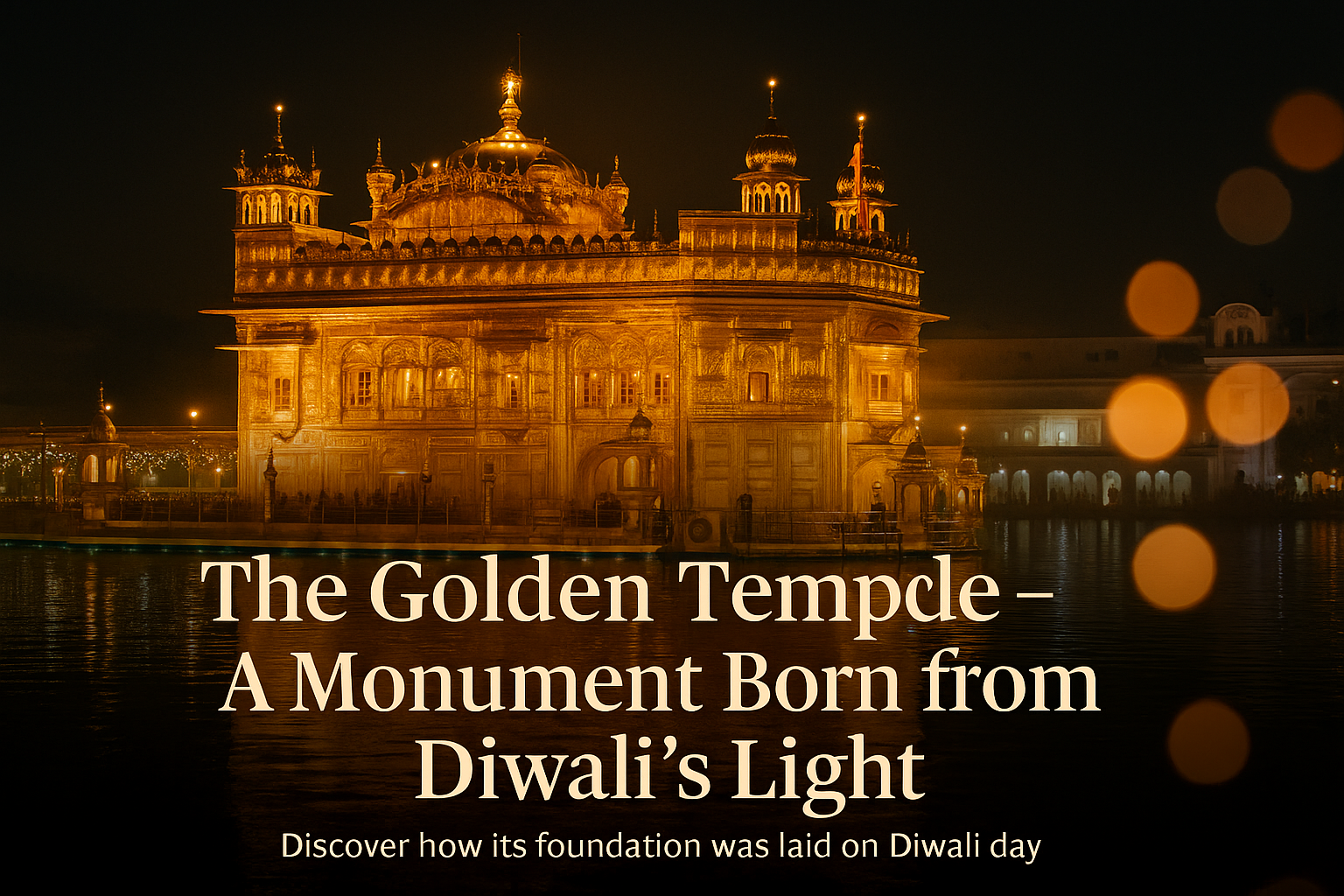Every year, as countless lamps illuminate homes across India on the festival of Diwali, one sacred monument in Amritsar glows brighter than all others: the Golden Temple, also known as Sri Harmandir Sahib. This beautiful shrine is not only the spiritual heart of Sikhism but also a symbol of peace, unity, and divine light.
What makes its story even more remarkable is that the foundation of this popular Indian monument was laid on Diwali day. This historical and spiritual connection between the festival of lights and the creation of the Golden Temple continues to inspire millions of devotees around the world.
The Foundation of Which Popular Indian Monument Was Laid on Diwali Day?
The answer is the Golden Temple (Sri Harmandir Sahib) in Amritsar, Punjab. Its foundation stone was laid in 1588 CE during the time of Guru Arjan Dev Ji, the fifth Sikh Guru. This event took place on the sacred day of Diwali, giving the monument a timeless association with light, purity, and enlightenment.
Guru Arjan Dev Ji envisioned a temple that would welcome people from every religion, caste, and community. To symbolize this universal acceptance, the Golden Temple was designed with four entrances, each facing a different direction. These entrances represent the openness of Sikhism to all of humanity. At the center of the temple complex lies the Amrit Sarovar, the holy pool from which the city of Amritsar derives its name. The word “Amritsar” means “pool of nectar,” reflecting the spiritual significance of the site.
The Role of Sai Mian Mir – A Saint Beyond Boundaries
When the time came to lay the foundation stone of this sacred temple, Guru Arjan Dev Ji invited Sai Mian Mir, a revered Sufi saint from Lahore, to perform the ceremony. This decision was both revolutionary and deeply symbolic. It showed that true spirituality transcends the boundaries of religion and that faith is a bridge, not a wall.
The presence of Sai Mian Mir at the foundation-laying ceremony reflected the Sikh Gurus’ commitment to harmony between different faiths. In an age when society was often divided by caste and creed, this act sent a message of equality and compassion. The foundation of the Golden Temple on Diwali thus became not only an architectural milestone but also a spiritual statement about the unity of humanity.
Diwali and the Sikh Faith – The Festival of Liberation
While Diwali is celebrated by Hindus to mark Lord Rama’s return to Ayodhya, it holds a special meaning for Sikhs as well. For the Sikh community, Diwali coincides with Bandi Chhor Divas, meaning The Day of Liberation.
This day commemorates the return of Guru Hargobind Sahib Ji, the sixth Sikh Guru, from imprisonment under the Mughal emperor Jahangir. Guru Hargobind Sahib Ji refused to leave the prison until fifty-two other kings, who were unjustly detained, were also released. His act of compassion and justice turned Diwali into a symbol of freedom and moral victory for Sikhs.
Since then, Diwali has been celebrated with great devotion at the Golden Temple. On this day, the entire temple complex is illuminated with thousands of glowing lamps, and fireworks light up the night sky. The shimmering reflection of the Golden Temple in the Amrit Sarovar creates one of the most breathtaking sights in the world. Pilgrims from all corners of the globe gather to offer prayers and experience the divine atmosphere.
The Spiritual Symbolism of Light
The connection between Diwali and the Golden Temple is more than a historical coincidence. Both represent the same universal message: the victory of light over darkness and truth over ignorance. The foundation of the Golden Temple on Diwali day signifies the birth of a beacon of hope that continues to shine centuries later.
In Sikhism, light symbolizes knowledge, peace, and divine presence. Lighting lamps in the Golden Temple is not just an act of celebration but a reminder that inner darkness can only be dispelled through truth, humility, and service to humanity. The temple itself, surrounded by the sacred waters of Amrit Sarovar and bathed in golden light, stands as a living symbol of the divine energy that Diwali celebrates.
A Monument of Unity and Faith
The Golden Temple remains one of the most visited spiritual sites in the world. Every brick and reflection of its golden dome tells a story of devotion and unity. The fact that its foundation was laid on Diwali day reminds us that festivals are not merely rituals, but powerful opportunities for harmony and enlightenment.
Guru Arjan Dev Ji’s vision, brought to life by Sai Mian Mir’s sacred hands, gave the world a temple that welcomes everyone, regardless of who they are or what they believe. The message is clear: light is universal, and the divine belongs to all.

